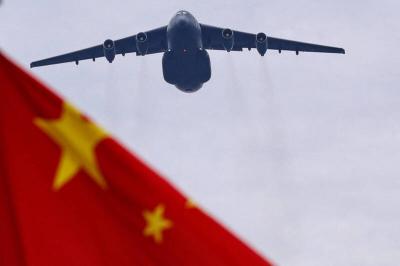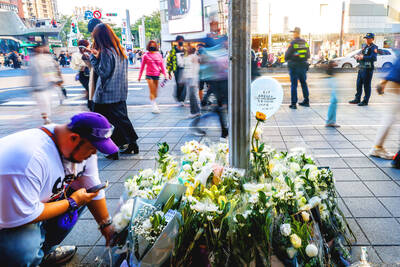Pastors of the Truku tribe in an Aboriginal township in Hualien have sought to preserve the tribe's culture and language by publishing the nation's first Truku dictionary yesterday.
In 1999, six pastors in Sioulin Township (秀林) of Hualien County formed a team to write the nation's first Truku dictionary after realizing that the tribe's language could soon be lost if they didn't put efforts into its preservation, Jiru Haruq, a pastor at a local church and an author of the dictionary, said.
Although Sioulin only has about 15,000 inhabitants, it is one of the two major Truku regions in the country, with over 85 percent of the population in the area, according to the township's Web site.
In the past, the Truku tribe was considered a subtribe of Atayal because of their close connections, Sioulin Township Mayor Syu Shu-yin (許淑銀) said.
Although the writing of the dictionary only began in 1999, the research started in 1953.
"In 1953, Pisaw Yudaw, a pastor at a local church, began to translate the Bible into Truku," said Iyuq Ciyang, another author of the dictionary.
"After five years working on the translation, Pisaw built a lexicon of 3,000 Truku root words, which became the base for the dictionary," he added.
Words in Truku are created by adding prefix, postfix and midfix to root words. A root word can develop into as many as 40 words, Jiru explained.
Midfix is added into the middle of a root word by separating the root word.
Taking an example from the dictionary, hakawis a root word meaning "bridge" in Truku, hmhakaw becomes "bridge-building", mhakaw is a bridge builder, shakaw is the reason to build a bridge and hkagan is the location where the bridge is built.
"Verb tenses and different parts of speech are also constructed by adding prefixes, postfixes or midfixes to a rood word," Iyuq said.
"Culture and language are inseparable," Jiru said. "The wisdom of our ancestors and our history are alive in the Truku language."
Jiru gave an example of how the Truku language is closely connected to the tribe's collective memory.
"Preserving the language is preserving our culture, our customs, and our traditions," Jiru said.

Beijing could eventually see a full amphibious invasion of Taiwan as the only "prudent" way to bring about unification, the US Department of Defense said in a newly released annual report to Congress. The Pentagon's "Annual Report to Congress: Military and Security Developments Involving the People's Republic of China 2025," was in many ways similar to last year’s report but reorganized the analysis of the options China has to take over Taiwan. Generally, according to the report, Chinese leaders view the People's Liberation Army's (PLA) capabilities for a Taiwan campaign as improving, but they remain uncertain about its readiness to successfully seize

Taiwan is getting a day off on Christmas for the first time in 25 years. The change comes after opposition parties passed a law earlier this year to add or restore five public holidays, including Constitution Day, which falls on today, Dec. 25. The day marks the 1947 adoption of the constitution of the Republic of China, as the government in Taipei is formally known. Back then the Chinese Nationalist Party (KMT) governed China from Nanjing. When the KMT, now an opposition party in Taiwan, passed the legislation on holidays, it said that they would help “commemorate the history of national development.” That

Taiwan has overtaken South Korea this year in per capita income for the first time in 23 years, IMF data showed. Per capita income is a nation’s GDP divided by the total population, used to compare average wealth levels across countries. Taiwan also beat Japan this year on per capita income, after surpassing it for the first time last year, US magazine Newsweek reported yesterday. Across Asia, Taiwan ranked fourth for per capita income at US$37,827 this year due to sustained economic growth, the report said. In the top three spots were Singapore, Macau and Hong Kong, it said. South

HORROR STORIES: One victim recounted not realizing they had been stabbed and seeing people bleeding, while another recalled breaking down in tears after fleeing A man on Friday died after he tried to fight the knife-wielding suspect who went on a stabbing spree near two of Taipei’s busiest metro stations, Taipei Mayor Chiang Wan-an (蔣萬安) said. The 57-year-old man, identified by his family name, Yu (余), encountered the suspect at Exit M7 of Taipei Main Station and immediately tried to stop him, but was fatally wounded and later died, Chiang said, calling the incident “heartbreaking.” Yu’s family would receive at least NT$5 million (US$158,584) in compensation through the Taipei Rapid Transit Corp’s (TRTC) insurance coverage, he said after convening an emergency security response meeting yesterday morning. National